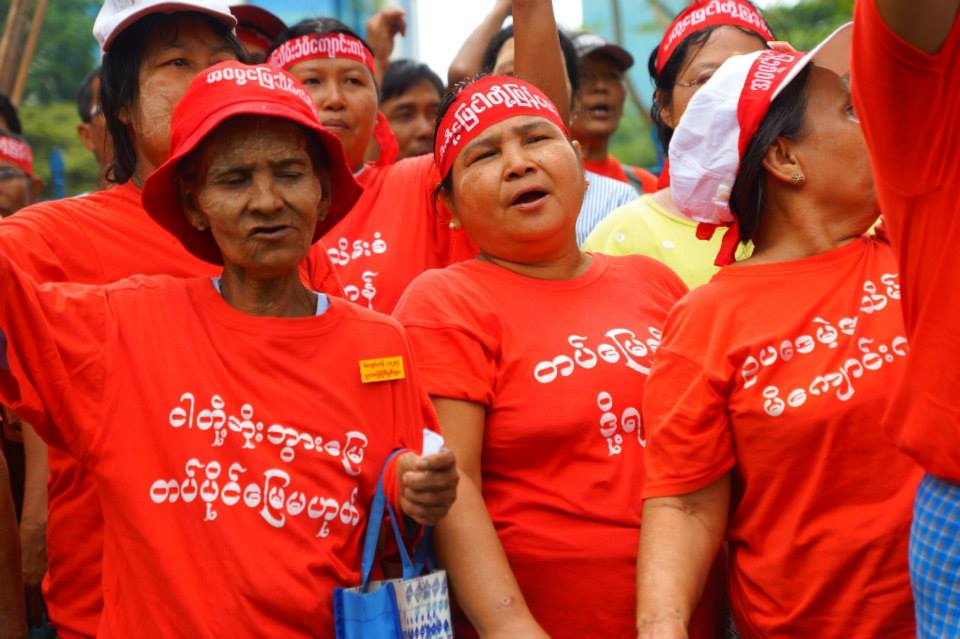Protestors that have been occupying a sidewalk of downtown Rangoon for more than six months have been given a deadline of 3 October to vacate the site and dismantle their encampment.
More than 100 residents of Thingyangun’s Michaungkan village have participated in a series of sit-ins and other demonstrations demanding the return of land they say was confiscated by the Burmese military in 1990.
A group of about 200 had initially set up camp at Thingyangun’s Myasaryan Pagoda in late November 2013. About one week after the demonstrations began, on 2 December, approximately 400 villagers showed up at the site to receive funeral rites from local monks, proclaiming that they were “ready to die” for their land.
Shortly after, demonstrators reported that they were attacked by a group of thugs who claimed to be military cleaning personnel. Within days of the incident, which reportedly left at least eight people injured, police issued an eviction order demanding that the site be cleared by 9 December.
Protest leaders and the Land Investigation Commission negotiated a three-month hiatus of the occupation after the commission promised to deliver results within that time.
Parliamentarian and Commission member Aung Thein Linn told DVB in December that the government was committed to solving the dispute. “Otherwise,” he said, “it will be damaging to our country’s image, especially while the SEA Games are being held.”
[related]
The country was at that time hurrying to prepare for a major regional sporting event, the Southeast Asian Games, which drew international attention and visitors.
Three months later and still unsatisfied, about 100 protestors resumed the sit-in, this time bringing their grievances to Maha Bandula Park in downtown Rangoon, across the street from City Hall.
One week later, on 30 March, they were forcibly dispersed in an early morning raid by city officials and dozens of plain-clothed men.
The demonstrators vowed to keep fighting and have maintained a presence at the park ever since.
In August, a 72-year-old protestor died at the encampment after 138 days of her sit-in. At that time, her fellow activists reiterated that nothing would make them accept the loss of their land, even death.
During the military regime, land was routinely confiscated by the government for state use. Since the reforms began in 2011, protests have been increasingly common all across Burma as villagers have attempted to reclaim lost assets.
New land legislation introduced in early 2012 has met major criticism, with some claiming that the new laws legitimise government and corporate acquisition while offering little protection for individuals. A government commission established in 2012 has begun fielding Burma’s thousands of land-grab claims but has yet to provide satisfactory recourse.



